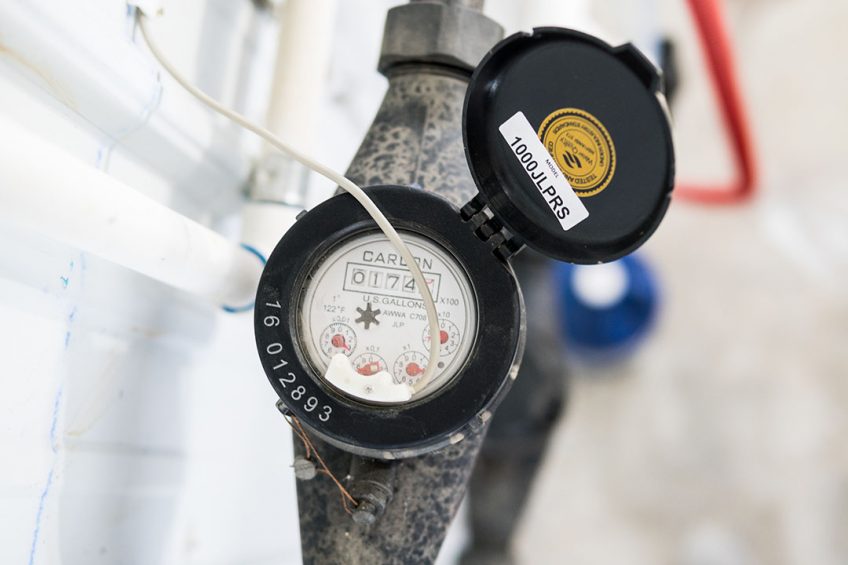Maintaining water quality vital for flock performance

Water is often the forgotten nutrient but plays a very important role in unlocking genetic potential. Water quality and management of the system supplying water to the birds is vital to ensuring optimum flock performance.
As long as we are rearing broilers for meat production, nutrition is a subject which the industry will continue to discuss. The quantity of protein, energy and vitamins administered play an important role in unlocking the genetic potential of today’s high performance breeds. This is certainly important but what we must never lose sight of is the most crucial nutrient, which is water. Water consumption is nearly double the amount of feed consumed and plays a key role in the transfer of nutrients, the removal of toxins and heat dispersion, and is also involved in many chemical reactions. About 70% of the chick weight consists of water, 70% of which is intracellular and 30% is blood and interstitial cell space. Young growing birds will consume more water than they excrete due to the high demand for water by the developing organs. As birds get older, the intake will equal the water excretion but this balance can be disturbed due to external factors (diseases, etc). This article will discuss the importance of water quality and how to maintain it, along with drinker management.
Water quality
In general it can be said that if the water is not good enough for us to drink then it won’t be good enough for our birds to drink either. Several factors will affect water quality, with the source, bacteria, pH level, hardness and TDS (total dissolved solids) being the most important. When the water supply to a poultry house is not properly managed it may harbour challenges, such as bacteria, viruses and protozoa. A poultry drinking system offers a perfect environment for bacteria. Especially during the start of a broiler flock with high brooding temperatures, the temperature of the water can easily and rapidly increase. Together with the slow movement of the water in the system (when consumption is at a low rate) this creates an ideal environment for bacteria to grow. The temperature of the water can be easily checked using a combined temperature/pH measuring device. Temperatures above 26.7°C will significantly reduce water intake and subsequently feed intake. Ideally, water temperature should be below 20°C but always aim to keep it under 25°C.
Water samples should be taken at least twice a year (once during the summer and once during the winter) and tested for microbial as well as mineral content. Samples should be taken at the source and at the end of the drinking line. Make sure the water is fresh when sampled so let it run for a few minutes before taking the sample. Use a sterile container with no airspace and samples should reach the lab within 24 hours of sampling. Table 1 can be used as a guideline for evaluating the lab results.
The pH (power of hydrogen) value also has a major impact on water quality and consumption. Pure water has a pH of 7 and a scale change of 1 represents a ten-fold difference. If pH levels get above 8, water consumption will be reduced with all the attendant adverse effects on feed intake and flock performance. If the pH drops below 6, vaccines and medication supplied in the drinking water will be negatively affected. If the pH drops to less than 3, the water will be unpalatable and have a corrosive effect on the equipment. And, last but not least, the pH level also impacts the efficacy of sanitation.
Water hardness is a measure of the presence of dissolved minerals. The main elements affecting the hardness of water are: calcium, magnesium, iron and manganese. High levels of these elements will result in the deposition of limescale or sludge in the drinking system and can significantly reduce the volume of pipes and nipple flow rates. It will also affect medications, disinfectants and sanitisers, making them less effective. Sodium-based water softeners can reduce the hardness of water, however, this is not recommended in poultry houses as birds are very sensitive to high levels of sodium in the water. Sodium levels in water used for broiler production should always be less than 50 mg/litre.

Water sanitising
A very common method for sanitising water in broiler houses is chlorination. When chlorine is added to drinking water a chemical reaction takes place with the formation of Hypochlorous Acid (HOCl). This HOCl is a weak acid and will further dissociate into chlorine (OCl-). The HOCl is 80-300 times more effective as a sanitiser compared with OCl- and the level of HOCL will depend on the pH of the water. In general a lower pH will produce more HOCl so chlorination as a sanitising tool will be more effective. Effective chlorination requires a pH<7.>
A relatively easy way to test the disinfection potential of water in a broiler house is to use an oxidation reduction potential meter (ORP meter) which measures in millivolts (mV). The higher the value, the better the disinfecting power of the chlorine added to the water. A low value indicates a heavy organic load which will reduce the biocidal efficacy of chlorine. The optimum level to kill E. coli and viruses is 650mV, while Salmonellae or Clostridia need a slight increase of 750mV. At levels of <250mv, chlorine will not be effective.>
Also interesting: Preventing vaccination failure in poultry flocks
Drinker systems and management
Many factors will influence the consumption of water in a broiler house (e.g. age, breed, house temperature, physical structure of the feed). A major factor will be the type of drinking equipment installed in the broiler house and how many units are available to the birds (i.e. number of birds per drinker/nipple).
Over the last 20 years drinking systems for broilers have been further improved and fine-tuned but the major change from a hygiene point of view was a switch from open water systems (bell drinkers) to closed systems (nipple lines). Open water systems have a very high risk of bacterial contamination, while organic and foreign matter more easily gain access to the water. This risk has been greatly reduced with the development of closed water systems. A closed system will also make it easier to control water temperature, minimise water spillage (drier litter), is easier to clean and will provide a better medium for the transport of medication and additives to the birds. Unfortunately, water is difficult to check visually in a daily inspection. Never assume that the water quality is good. Always: test it, treat it and flush it.

Whatever system or equipment is used, it can only be successful if it is properly managed. A nipple system with a 360° nipple for easier access is preferred. Calculate the number of nipples at the rate for 8-12 birds (low/high flow). Any compromise on this number will affect water intake and subsequently feed intake and growth. The height of the drinkers will depend on the age of the flock. To start with the beak of the bird must have a 35 to 45 degree angle to the floor for easy access. As the birds grow this angle can increase to 75 to 85 degrees to avoid spillage. If the drinking height is not correct this can be seen immediately from the behaviour and water consumption patterns of the birds. It is important to test the amount of water that the nipples provide. This will be determined by the type of nipple, the pressure in the waterline and the cleanliness of the system. A simple way to test this is with a nipple flow meter. Table 2 can be used as a reference for water flow rate based on the age of the birds.
Birds will spend less than one minute drinking, therefore, they should be able to consume the desired amount within this minute or performance will be reduced. Incorrect waterline management will greatly impact the performance of a flock and a 20% water intake reduction can already result in 200 gramme reduction in weight at 21 days. If water consumption decreases at any point during the bird health cycle, environment and management should be re-assessed.
The main risk with closed water systems is the build-up of a biofilm which typically is not visible. This biofilm is a thick mucus (slime) secreted by bacteria which builds up on the inside of a waterline if the system is not managed properly. This biofilm can cause flock health challenges as it harbours bacteria such as E. coli and salmonella. Biofilms are also difficult to remove and require mechanical action to remove them from the water system. They may also block nipples or cause them to leak. A robust cleaning and sanitising programme during a turnaround is recommended to prevent biofilms. Between flocks, it is recommended that the waterline be flushed and sanitised for biofilm control. Flushing is only effective with a water flow of 2 m/s (1.5 to 2 bars). A proven product to remove a biofilm from a drinker system is hydrogen peroxide as it will break down the biofilm and is non-corrosive for the drinking system. Hydrogen peroxide is effective against bacteria, fungi, algae and viruses when used in the proper dosage and in good time.












